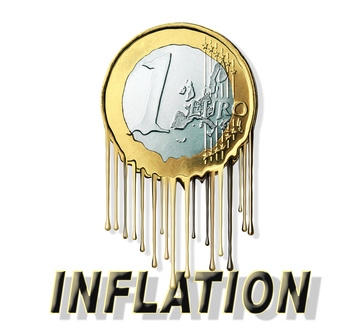Core CPI unexpectedly dropped to an annual pace of 1.2% in July, significantly lower than 1.7% that was expected, and lower than last month’s 1.6%. This shows that the “secondary effects” of rising commodity prices is diminishing, as the economic slowdown is felt across the continent.
Trichet’s stubborn rate hikes have taken their toll. Is he ready to change course?
Headline consumer price index came out at 2.5%, exactly as reported in the initial read. The initial read was also lower than expected. The drop in Core CPI shows that the threats of inflation reaching wages is much lower.
Weak inflation joins the latest disappointing GDP figures from both Germany and France. Germany’s economy hardly grew in Q2 – only 0.1%. France saw 0% growth. The growth for the whole euro-zone was 0.2%. For a change, the largest countries are weighing on growth instead of pushing it forward.
In the last meeting, Trichet kept a strong tone against inflation, saying that the central bank will “monitor very closely”. This suggests that a rate hike is possible within two month. The next meeting of the ECB will be held at the beginning of September.
The chances of hearing “strong vigilance” from him is very low. There’s a much higher chance of hearing a preparation for a rate cut.
While the ECB raised the rates twice in the past months, its other policies recently went in the other direction: the ECB is buying lots of Spanish and Italian bonds in order to stop contagion. In the first week of this action, the ECB spent 22 billion euros and managed to sterilize it – draining money from the markets. If these moves strengthen, it may not be able to sterilize it, and will find itself printing euros.
In any case, the gap between the policy of buying bonds – measures of easing, and standing firm on the rates which is measures of tightening, is likely to be closed towards the easing side.
EUR/USD is still strong after these news, but is clearly capped by resistance at 1.4450. For more on the pair, see the euro dollar forecast.
